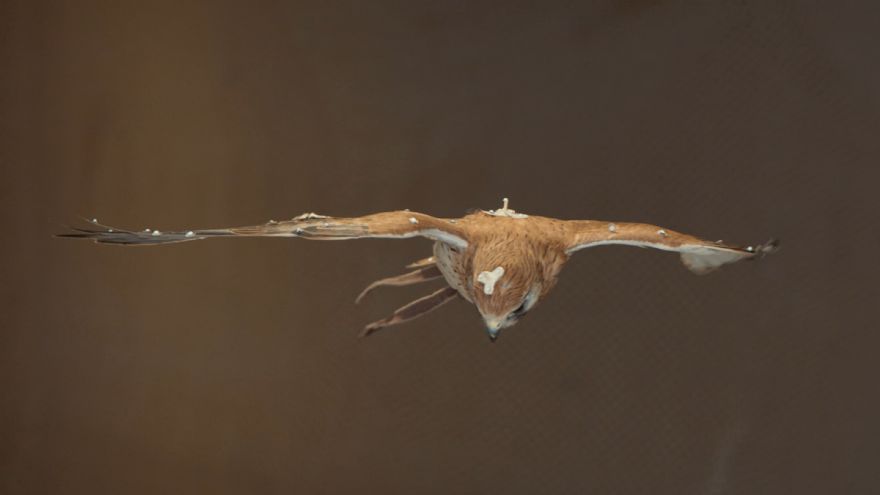 Credit: RMIT University
Credit: RMIT UniversityA new joint study by
RMIT University in Australia and the
University of Bristol has revealed the secrets to the remarkably steady flight of kestrels and could inform future drone designs and flight control strategies. Making drones safer and more stable in turbulent conditions, or in cities where wind gusts from tall buildings make flying more difficult, makes applications like parcel delivery, food delivery and environmental monitoring more feasible, more often.
The study conducted in RMIT’s Industrial Wind Tunnel facility – one of the largest of its kind in Australia – is the first to precisely measure the stability of a Nankeen Kestrel’s head during hovering flight, finding movement of less than 5mm while hunting.
RMIT lead researcher Dr Abdulghani Mohamed, said: “Typically, aircraft use flap movements for stabilisation to achieve stability during flight. Our results acquired over several years, show birds of prey rely more on changes in surface area, which is crucial as it may be a more efficient way of achieving stable flight in fixed wing aircraft too.”
Kestrels and other birds of prey are capable of keeping their heads and bodies extremely still during hunting. This specialised flight behaviour, called wind hovering, allows the birds to ‘hang’ in place under the right wind conditions without flapping. By making small adjustments to the shape of their wings and tail, they can achieve incredible steadiness.
Thanks to advancements in camera and motion capture technology, the research team was able to observe two Nankeen Kestrels, trained by
Leigh Valley Hawk and Owl Sanctuary in Ballaret, Victoria, at high resolution. Fitted with reflective markers, the birds’ precise movements and flight control techniques during non-flapping flight were tracked in detail for the first-time.
Dr Mohamed said: “Previous studies involved birds casually flying through turbulence and gusts within wind tunnels; in our study we tracked a unique wind hovering flight behaviour whereby the birds are actively maintaining extreme steadiness, enabling us to study the pure control response without flapping.”
Morphing wings in dronesBy mapping these movements, the researchers gained insights that could be utilised to achieve steadier flight for fixed wing aircrafts. Dr Mohamed added: “The wind hovering behaviour we observed in kestrels is the closest representation in the avian world to fixed wing aircraft. Our findings surrounding the changes in wing surface area could be applied to the design of morphing wings in drones, enhancing their stability and making them safer in adverse weather.”
Associate Professor of Bio-Inspired Aerodynamics at Bristol University and joint author, Dr Shane Windsor, said the usefulness of current fixed wing unmanned aerial vehicles (UAVs) was significantly decreased by their inability to operate in even relatively low winds. “UAVs are being used in the UK to deliver post to remote islands, but their operation time is limited because of regular gusty conditions.
“Current commercially available fixed wing aircraft use conventional control methods to achieve stable flight, meaning the entire craft needs to be designed for one flying condition.nThe advantage of morphing wings is that they could be continually optimised throughout a flight for a variety of conditions, making the aircraft much more manoeuvrable and efficient.”
The team now aims to further their research by examining the birds under gusty and turbulent conditions, which would see further learnings in stable flight with the goal of allowing UAVs to operate more safely and more often.
While initially focused on smaller aerial vehicles, the team hopes to simplify the data collected so that it can be adapted for larger scale aircraft.
The paper:
Steady as they hover: kinematics of kestrel wing and tail morphing during hovering flights by Mario Martinez Groves-Raines, George Yi, Matthew Penn, Simon Watkins, Shane Windsor and Abdulghani Mohamed has appeared in the
Journal of Experimental Biology .